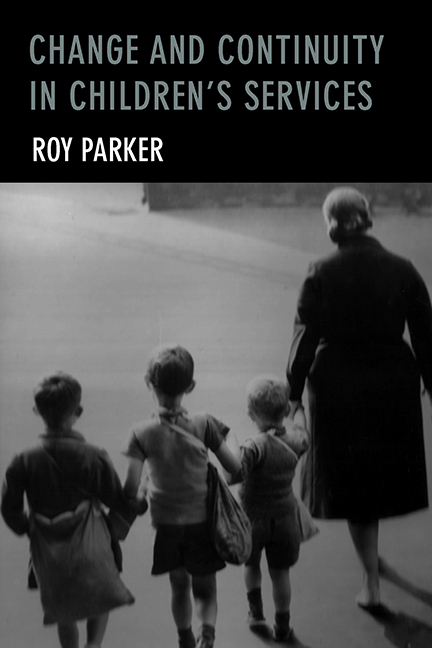Book contents
- Frontmatter
- Dedication
- Cover illustration
- Contents
- Acknowledgements
- Preface
- 1 Introduction: patterns of change and continuity
- 2 Residential child care: an historical perspective
- 3 From boarding-out to foster care
- 4 The evolution of landmark legislation
- 5 Getting started with the Children Act 1948: what do we learn?
- 6 Child care in the melting pot in the 1980s
- 7 Trends, transitions and tensions: children’s services since 101 the 1980s
- 8 Reflections on the assessment of outcomes in child care
- 9 The role and function of inquiries
- 10 Evidence, judgement, values and engagement
- 11 Emerging issues: looking ahead
- Notes and references
- Bibliography
- Index
2 - Residential child care: an historical perspective
Published online by Cambridge University Press: 07 March 2022
- Frontmatter
- Dedication
- Cover illustration
- Contents
- Acknowledgements
- Preface
- 1 Introduction: patterns of change and continuity
- 2 Residential child care: an historical perspective
- 3 From boarding-out to foster care
- 4 The evolution of landmark legislation
- 5 Getting started with the Children Act 1948: what do we learn?
- 6 Child care in the melting pot in the 1980s
- 7 Trends, transitions and tensions: children’s services since 101 the 1980s
- 8 Reflections on the assessment of outcomes in child care
- 9 The role and function of inquiries
- 10 Evidence, judgement, values and engagement
- 11 Emerging issues: looking ahead
- Notes and references
- Bibliography
- Index
Summary
In Britain the Victorian era witnessed a remarkable proliferation of institutions. There were new workhouses, prisons, hospitals, lunatic asylums and barracks. Boarding schools were built for the children of the middle and upper classes and reformatories, industrial schools, refuges and homes for those of the poor. Despite recurrent bouts of economic depression, it was an age of construction that was closely associated with the development of the cities, of factory-based industry, of the railways, canals and docks. Public buildings, from baths to museums, multiplied as local government gradually acquired enlarged responsibilities, more resources and a sense of civic pride, typically captured by the many magnificent town halls that were built in the latter part of the nineteenth century.
Building labour was cheap and, apart from the central areas of the main cities, so was land. The domestic brick industry was rapidly expanding and new techniques, for example in the production of cement, did away with many of the former cumbersome and time-consuming processes of construction. However, the quality of building varied. Housing for the swelling ranks of the urban working class was built down to a low standard. By contrast, homes for the wealthy and grand edifices for corporate bodies were often of the highest quality and meant to last. There were, for example, the great railway stations that, like other such monuments, proclaimed the stability, reliability and economic prosperity of their owners. They were symbols of assertive self-confidence.
I The Poor Law influence
The multiplication of institutions for children from about the 1860s onward has to be seen against a backcloth of this history of building and building costs. Yet this alone does not explain the widespread and enduring conviction among many of those of influence that the institution was an appropriate remedy for a wide assortment of social ills. Nor are they sufficient to account for the deep repugnance with which a broad sector of the population viewed the prospect of having to be admitted to an institution. Other factors have to be added, prominent among which is the nature of the English Poor Law that survived, in one shape or another, until 1948.
- Type
- Chapter
- Information
- Change and Continuity in Children's Services , pp. 19 - 34Publisher: Bristol University PressPrint publication year: 2015



